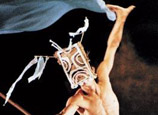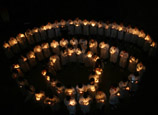
WASHINGTON, Jan. 24 (Xinhua) -- The U.S. space regulator NASA announced Thursday that it has joined the European Space Agency's Euclid mission, a space telescope designed to investigate the cosmological mysteries of dark matter and dark energy.
Scientists will launch the telescope in 2020 and spend six years in mapping the locations and measuring the shapes of as many as two billion galaxies spreading over more than one-third of the sky. It will study the evolution of the universe, the dark matter and dark energy that influence its evolution in ways which still are poorly understood.
The probe will be expected to orbit around the Sun-Earth Lagrange point L2, which is a location where the gravitational pull of two large masses, the Sun and Earth, precisely equals the force required for a small object, such as the Euclid probe, to maintain a relatively stationary position behind Earth as seen from the Sun.
"NASA is very proud to contribute to ESA's mission to understand one of the greatest science mysteries of our time," said John Grunsfeld, associate administrator for NASA's Science Mission Directorate at the agency's headquarters in Washington, D. C..
NASA and ESA recently signed an agreement outlining NASA's role in the project. In accordance with the agreement, NASA will contribute 16 state-of-the-art infrared detectors and four spare detectors to one of the two science instruments planned for Euclid mission.
Also, NASA has nominated three U.S. science teams totaling 40 new members for the Euclid Consortium, on top of 14 U.S. scientists already supporting the mission. The Euclid Consortium is an international body of 1,000 members who will oversee development of the instruments, manage science operations, and analyze data.
















 Beijing fantasy emerges in dense fog
Beijing fantasy emerges in dense fog


![]()
